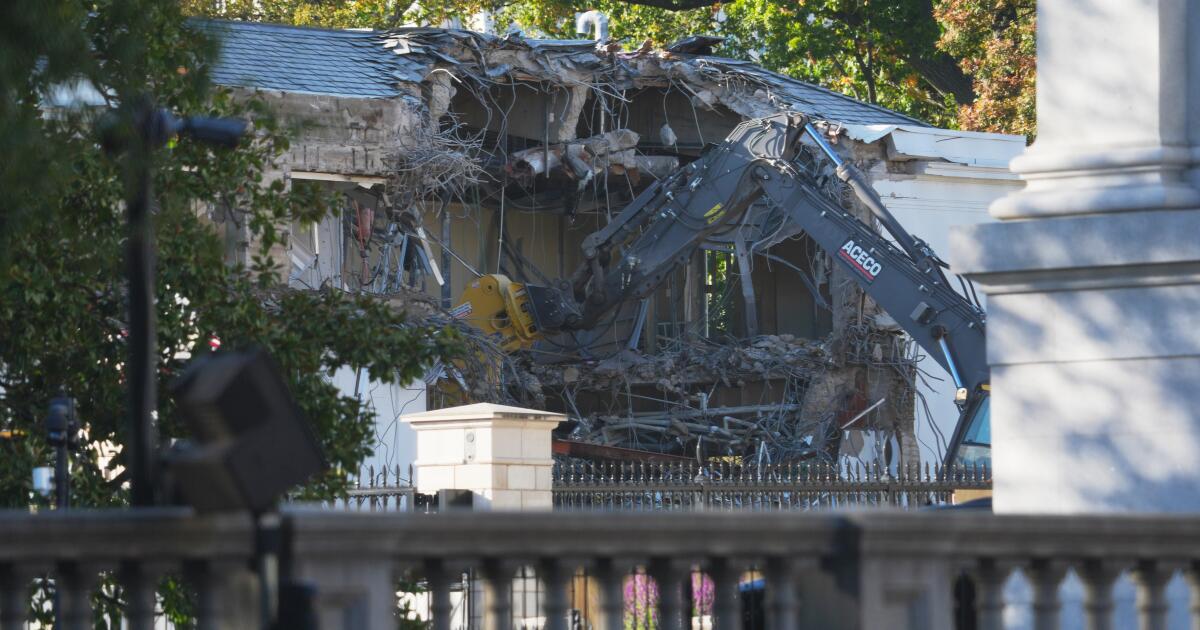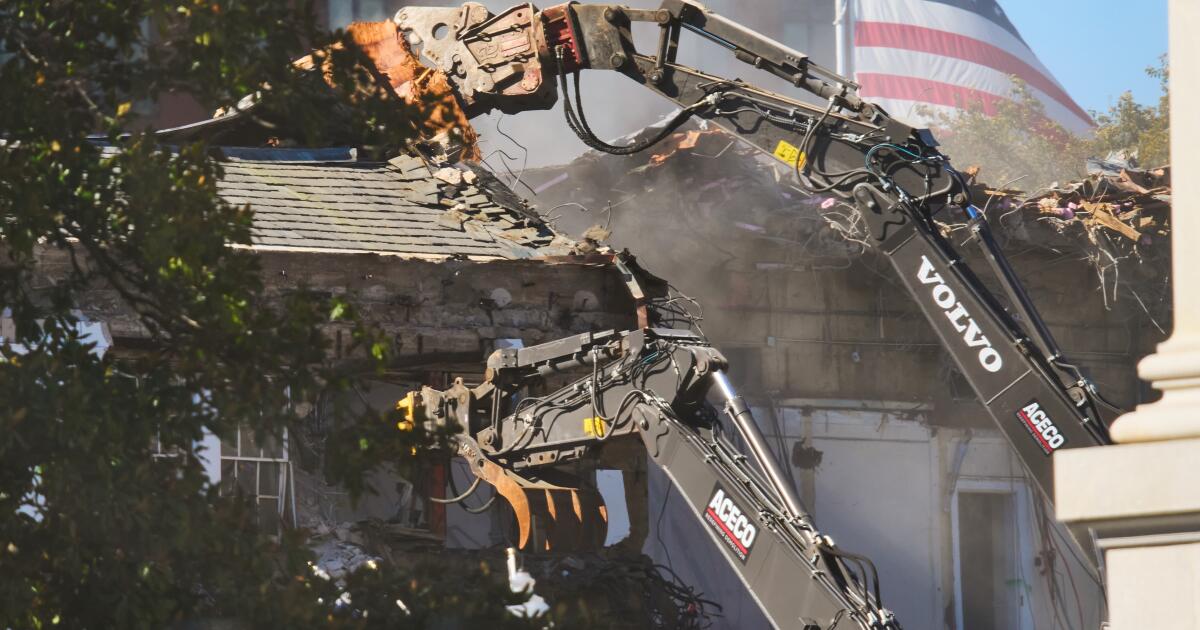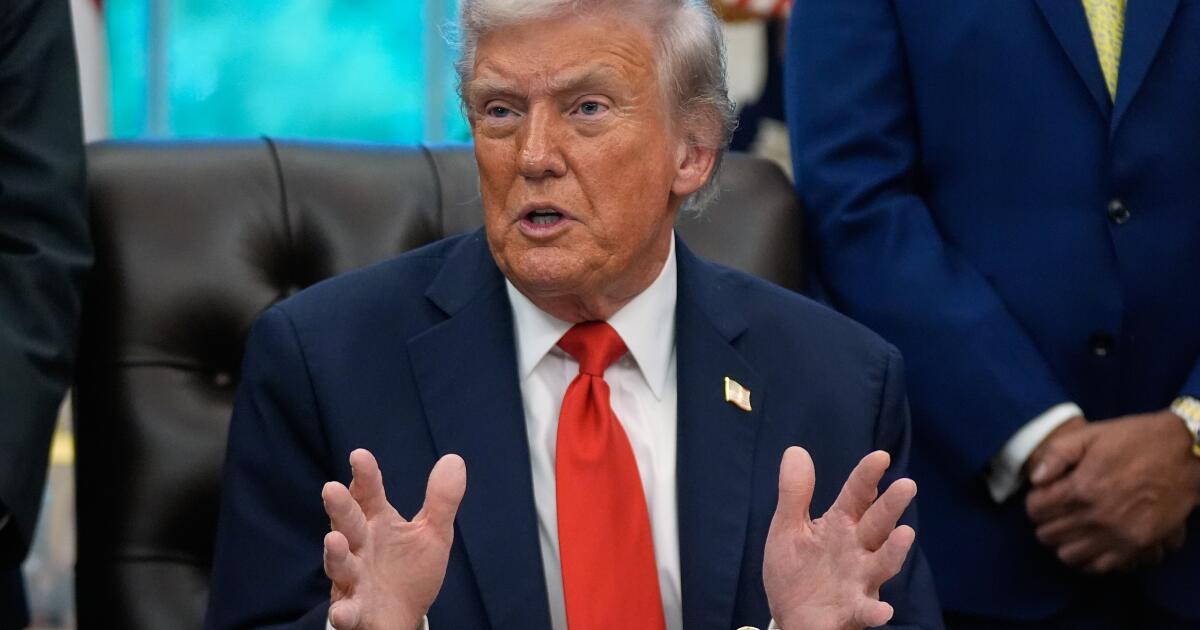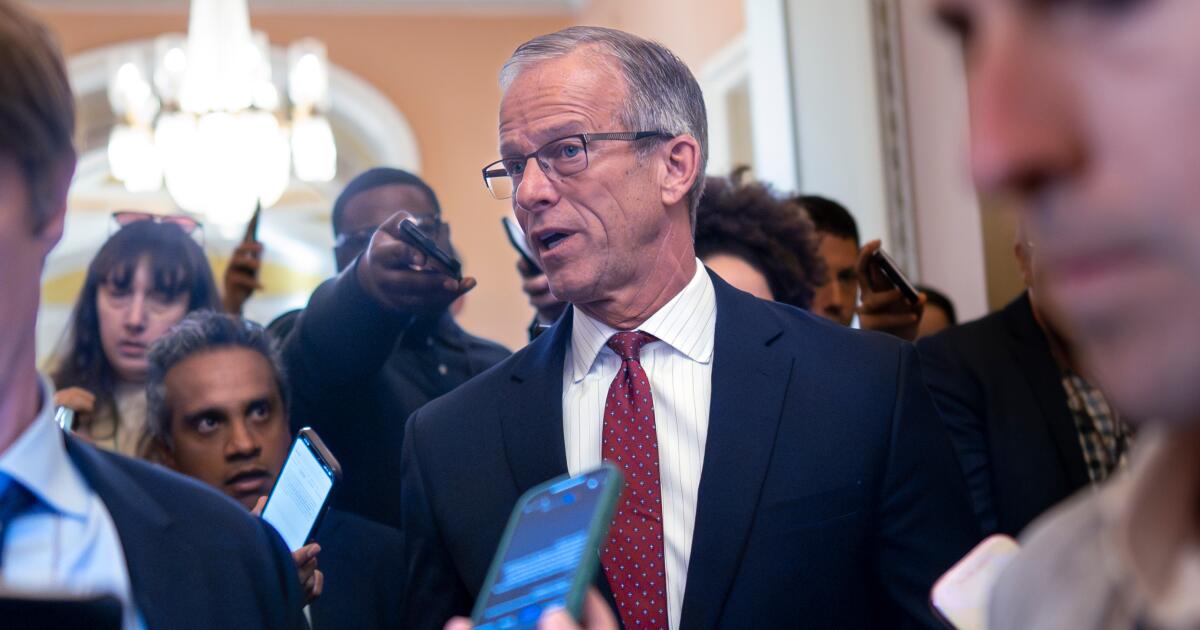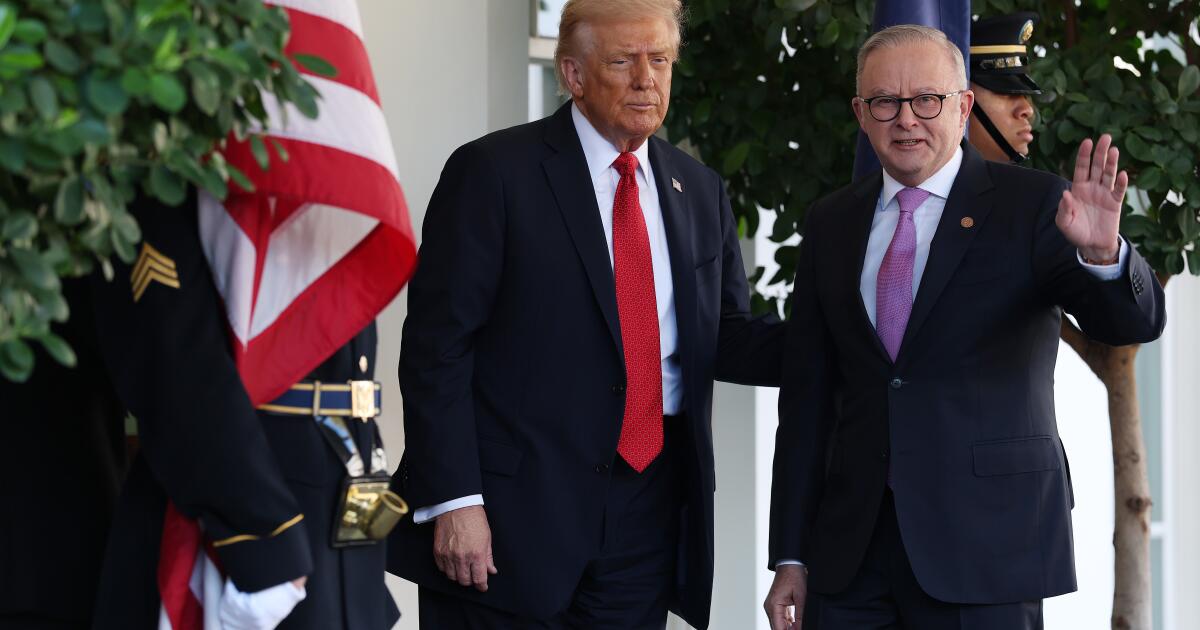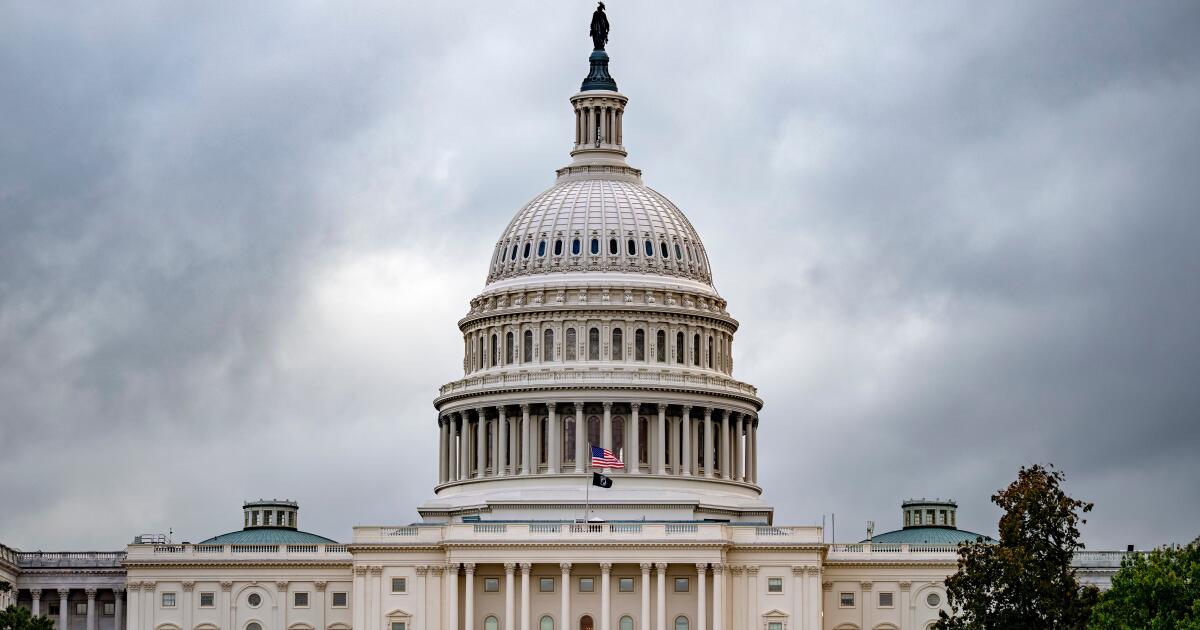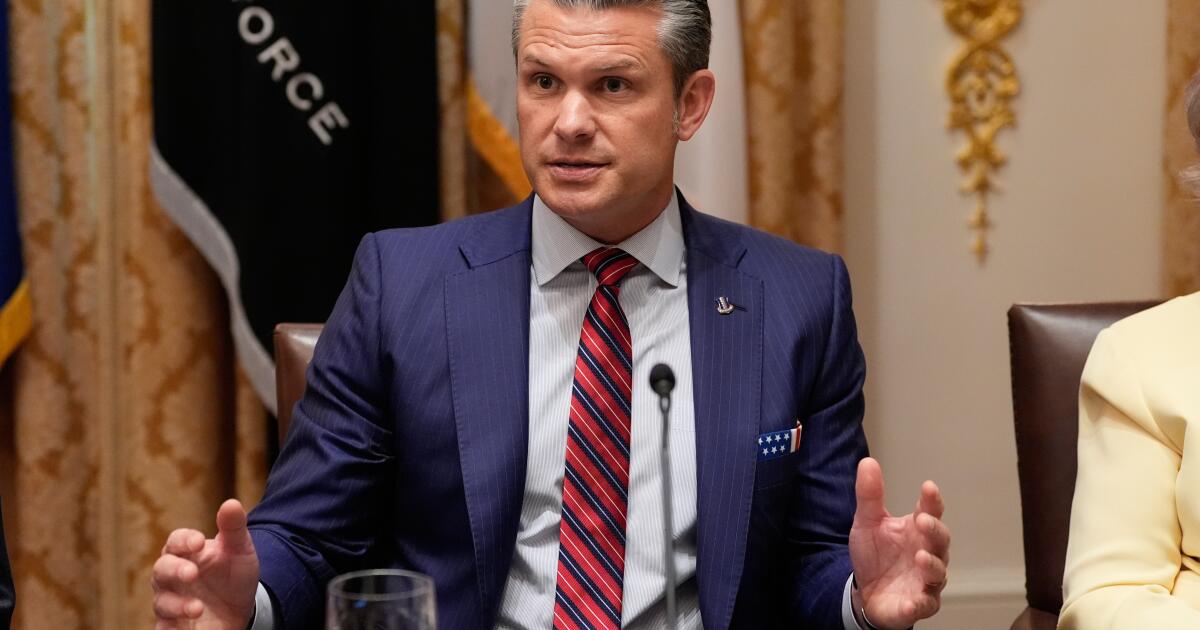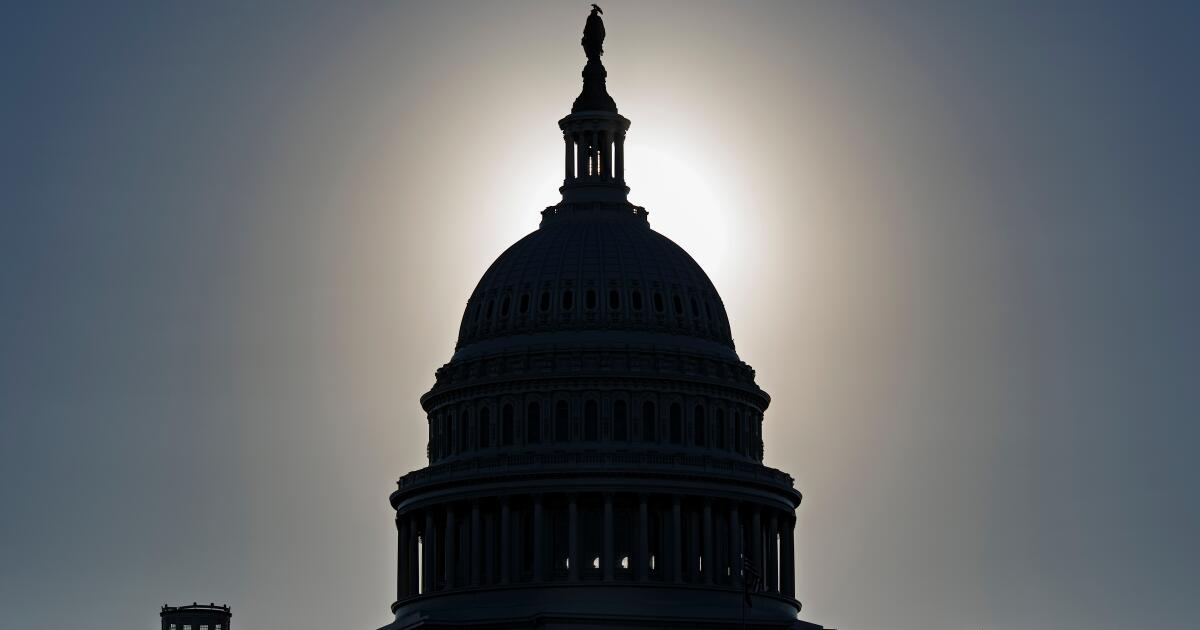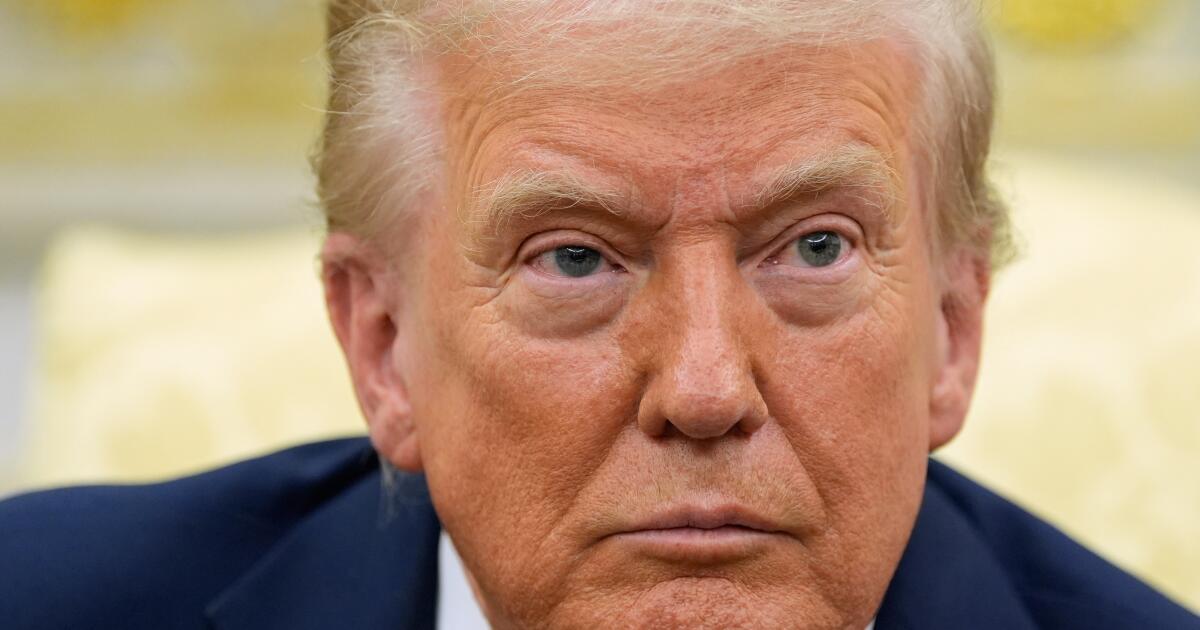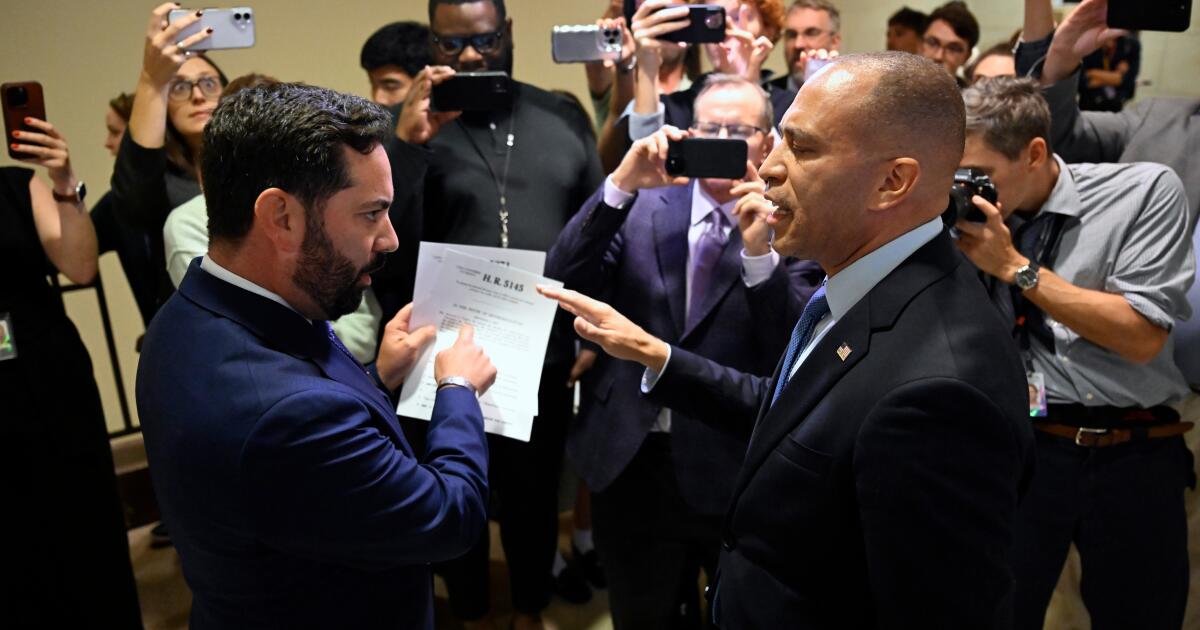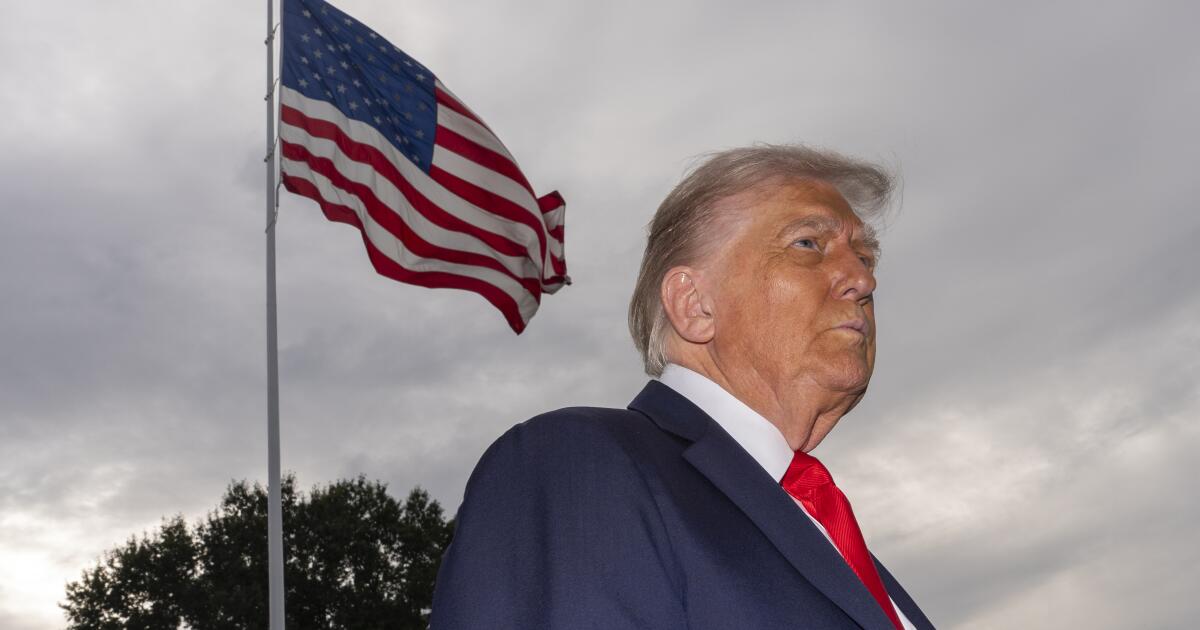WASHINGTON — President Trump has begun demolition of the East Wing as he remakes the White House in his image, ignoring rules, breaking promises and taking a wrecking ball to the approval process in an echo of the strategies he deployed in Florida and New York as he built his real estate empire.
An excavator ripped off the facade and parts of the roof on Monday, exposing the stone shell below. Windows have been removed. A truck carried trees outside the White House gates and down Pennsylvania Avenue. A crowd gathered outside to witness the partial tear-down of the historic building — which Trump said just weeks ago would not be touched in his plans to build a new ballroom.
“Over the next few days, it’s going to be demolished,” Trump said at a White House dinner last week for donors to the 90,000-square-foot structure estimated to cost between $200 million and $250 million.
“Everything out there is coming down, and we’re replacing it with one of the most beautiful ballrooms that you’ve ever seen.”
He described the forthcoming structure as “four sides of beautiful glass.”
But similar to the rule-breaking tactics he used when pushing through changes to Mar-a-Lago in Palm Beach and building his Trump Tower in New York, Trump’s sudden and dramatic White House overhaul has been made possible by his disdain for the rules that have protected Washington’s cohesive design. To date, he hasn’t submitted plans for review to the National Capital Planning Commission, which oversees renovation and additions to the federal buildings in the capital, including the president’s historic residence.
Not that the commission — now stacked with Trump’s allies — is complaining.
This summer, the president appointed his top aides — staff secretary Will Scharf, deputy chief of staff James Blair and Office of Management and Budget energy official Stuart Levenbach — to sit on the governing body.
Scharf, a longtime loyal Trump aide who hands him his executive orders to sign, was named chairman by the president. The appointments were so sudden that Scharf, at his first commission meeting on July 10, apologized for not connecting with any of his fellow commissioners ahead of time, noting his appointment had happened the night before.
At the commission’s next meeting, on Sept. 4, Scharf launched into a defense of Trump’s building project, arguing the commission does not have jurisdiction over demolition and site preparation work for federal property; that it just deals with construction.
“I think any assertion that this commission should have been consulted earlier than it has been, or it will be, is simply false,” he said.
The commission will just “play a role in the ballroom project when the time is appropriate for us to do so,” he said.
Not so fast, say past commissioners.
Preston Bryant, a former chairman of the commission, told the Miami Herald in an email that in his nine years on the job “the Commission always works on proposed capital projects in three stages — Conceptual, Preliminary Approval, and Final Approval. Even before conceptual, there’s early consultation.”
Trump is familiar with the process. When he and his Trump Organization were remodeling the Old Post Office Pavilion into a Trump Hotel in 2014, they had to get their plans approved by the commission, which was strict in its adherence to preserving the historical structure of the building.
His team submitted a 52-page proposal showing the design changes, drawings of the new interior and exterior, and detailed the effect the changes would have on local traffic.
But now Trump has plowed on, bulldozing any opposition.
“We’ll have the most beautiful ballroom in the country,” he said Monday at an event in the East Room of the White House, apologizing for any construction noise the guests may hear. “It just started today so that’s good luck.”
The White House did not respond to a request for comment. Trump, in a post on Truth Social, said the new ballroom will be “completely separate from the White House itself, the East Wing is being fully modernized as part of this process, and will be more beautiful than ever when it is complete!”
As photos and videos of the destruction went viral on social media, his top administration aides took to their accounts to defend the project, pointing out that the ballroom was being paid for with private donations and noting other presidents have made changes to the White House.
Past presidents, however, consulted advisers and architects, along with groups like the White House Historical Association and the Committee for the Preservation of the White House in addition to working with the commission, which is currently closed as part of the government shutdown.
One former commissioner noted that Washington, D.C., is a carefully planned city and that the commission strives to keep to the original vision of Pierre L’Enfant, who designed the layout of the capitol.
“If you don’t have a review process you’re basically saying one individual can say what the capital looks like. Washington doesn’t look this way by accident,” the commissioner, who asked for anonymity in order to speak freely, said.
Trump’s history of flouting the rules
Brushing aside red tape has long been a Trump strategy when it comes to changes at historic properties.
In 2006, Trump added an 80-foot flagpole with a 5-feet-by-25-feet flag on the front lawn of Mar-a-Lago — without the proper permit or permission. Palm Beach restricts flagpoles to no higher than 42 feet and flags that are a maximum of 4 feet by 6 feet.
The town fined Trump $250 a day. He countered with a $250 million lawsuit, accusing Palm Beach of violating his First Amendment rights and publicly blasted local officials for fining his patriotic display.
Trump and the town government finally came to an agreement: Trump filed for a permit and was allowed an oversized pole that was 10 feet shorter than the original pole. In return he would donate $100,000 to veterans’ charities.
He also warred with Palm Beach over his original plan for Mar-a-Lago, which was to turn its 17 acres into a subdivision. With millions in upkeep and no income generated, the property was costing him a fortune.
The Palm Beach Town Council vetoed all his construction plans. Once again, Trump sued.
Another deal was made: Trump offered to drop his lawsuit if the town let him turn the estate into a lucrative private club. The council agreed but also set a series of requirements, including capping the membership price and its capacity along with a restriction that no one was to spend more than 21 nights a year at the property.
Trump, however, has hiked the membership fees and, after he left the White House in the first term, he named Mar-a-Lago his permanent residence, getting an exemption to the 21-night stay rule.
Similar actions took place when he built Trump Tower in New York.
In 1980, Trump acquired the historic Bonwit Teller building. He demolished the 1929 Art Deco building to build his namesake tower.
Before the project began, several prominent residents expressed concern about the original building’s limestone relief panels, considered prominent works of art.
Trump agreed to preserve the panels and donate them to The Metropolitan Museum of Art.
But as construction continued, Trump changed his mind and had the panels demolished with the building, saying they had little value and were “without artistic merit.”
It’s a slight still felt in some circles in New York society.
‘Pays total respect to the existing building’
Back in Washington, heads are shaking over the demolition of one-third of the White House structure.
After all, in July, Trump said the current building wouldn’t be touched.
“It won’t interfere with the current building. It won’t be. It’ll be near it but not touching it — and pays total respect to the existing building, which I’m the biggest fan of,” he said.
Now, in addition to the destruction of the wing, he may touch parts of the original White House. Trump on Monday indicated part of one of East Wing walls will come down to connect his ballroom to the residence.
“That’s a knockout panel — you knock it out,” he explained.
The East Wing was built in 1902 as a guest entrance and expanded in 1942 by President Franklin D. Roosevelt. It houses the offices of the first lady and her staff, the military office and the visitors office.
It’s unclear what process FDR went through. The planning commission wasn’t established until 1952. But part of the reason he had it built was to cover the underground presidential bunker which was installed for security reasons.
Trump has already made his mark on the White House. He’s added gold gilding to the Oval Office and stacked its walls with portraits. He’s moved around presidential portraits throughout the complex and added paintings of himself.
On the colonnade, which is the walkway leading from the residence to the West Wing, Trump added a photo of each American president. One exception was Joe Biden. Trump instead placed a photo of a pen, referring to his constant criticism for Biden using the auto pen for his signature during his presidency.
He paved over the Rose Garden to make it look similar to the patio at Mar-a-Lago, putting out chairs and tables with yellow umbrellas brought up from his Florida club. And he’s installed two massive flags atop large poles — one on the North Lawn and one on the South Lawn.
And there could be more changes to come.
Scharf, at his September planning commission meeting, mentioned an upcoming beautification and redesign of Pennsylvania Avenue.
He didn’t offer any details but an earlier presentation to the commission showed plans to turn the iconic avenue into a more pedestrian friendly walkway, with a national stage for events, markets and green spaces.
The Eisenhower Executive Office Building, which sits next door to the White House and houses most of the administration staff, could be in his sights. In his first term, Trump mulled adding gold leaf to the white granite building.
But, for now, Trump is working on plans to build a ceremonial arch outside of Arlington National Cemetery, on a traffic circle that sits between it and Memorial Bridge.
It would commemorate the nation’s 250th anniversary next year. The president showed off design models and drawings to the ballroom donors, telling them there were three sizes to pick from and he was leaning toward the largest.
“Whichever one would look good. I happen to think the large one,” Trump said as the group laughed. “Why are you shocked?”
The drawings show an arch similar to France’s Arc de Triomphe with columns, eagles, wreaths and a gilded, winged figure.
Trump, earlier this month, had a model of it on his desk in the Oval Office when he was speaking to reporters on another matter.
The journalists noticed the piece and asked who it was for.
“Me,” he replied.
Emily Goodin writes for The Miami Herald and Tribune News Services.
